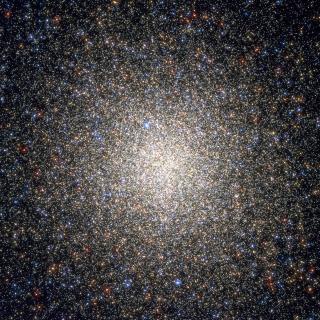Bibcode
DOI
Milone, A. P.; Bedin, L. R.; Piotto, G.; Anderson, J.; King, I. R.; Sarajedini, A.; Dotter, A.; Chaboyer, B.; Marín-Franch, A.; Majewski, S.; Aparicio, A.; Hempel, M.; Paust, N. E. Q.; Reid, I. N.; Rosenberg, A.; Siegel, M.
Referencia bibliográfica
The Astrophysical Journal, Volume 673, Issue 1, pp. 241-250.
Fecha de publicación:
1
2008
Revista
Número de citas
274
Número de citas referidas
232
Descripción
Photometry with the Hubble Space Telescope Advanced Camera for Surveys
(HST ACS) reveals that the subgiant branch (SGB) of the globular cluster
NGC 1851 splits into two well-defined branches. If the split is due only
to an age effect, the two SGBs would imply two star formation episodes
separated by ~1 Gyr. We discuss other anomalies in NGC 1851 that could
be interpreted in terms of a double stellar population. Finally, we
compare the case of NGC 1851 with the other two globulars known to host
multiple stellar populations, and show that all three clusters differ in
several important respects.
Based on observations with the NASA/ESA Hubble Space Telescope under the
programs GO-10775 and GO-5696, obtained at the Space Telescope Science
Institute, which is operated by AURA, Inc., under NASA contract NAS
5-26555.
Proyectos relacionados

Vía Láctea y galaxias cercanas
El objetivo general del Proyecto es el estudio de la estructura, historia evolutiva y proceso de formación de galaxias a través de sus poblaciones estelares resueltas, tanto a partir de fotometría como espectroscopia. El proyecto puede dividirse en cuatro líneas principales: I. Historia de formación estelar en el Grupo Local. El objetivo de esta
Martín
López Corredoira